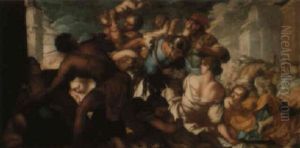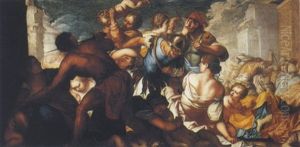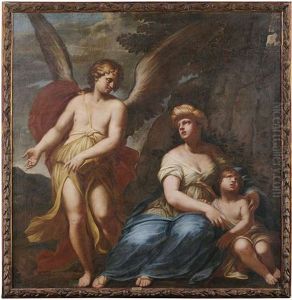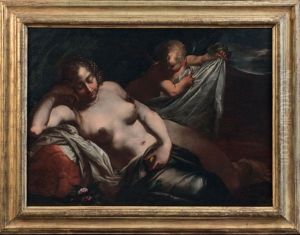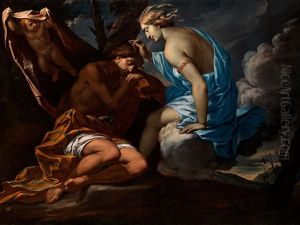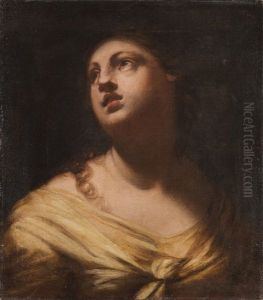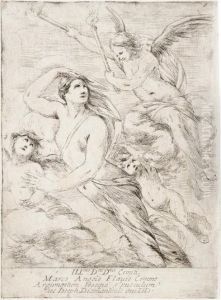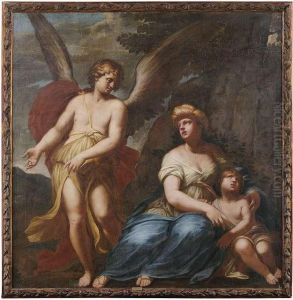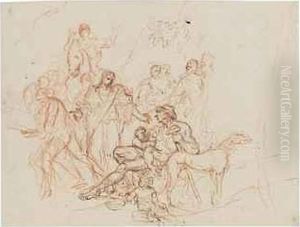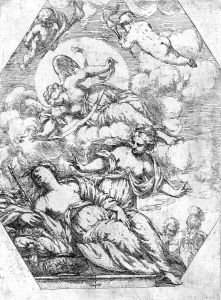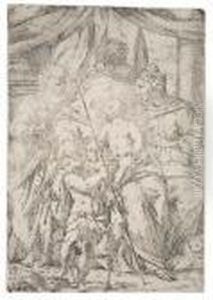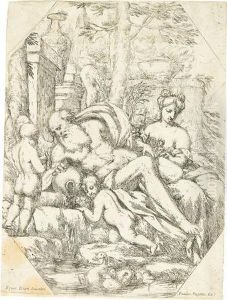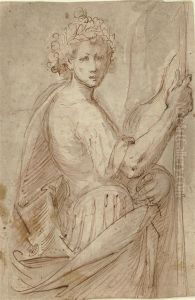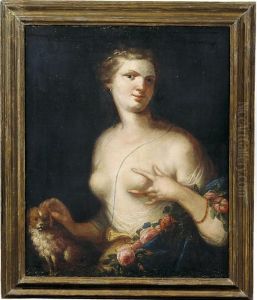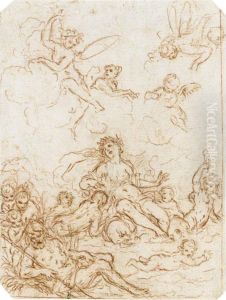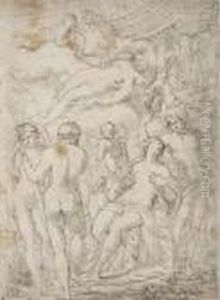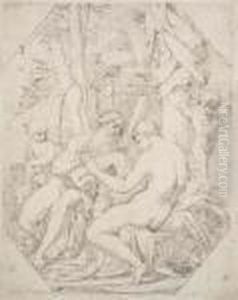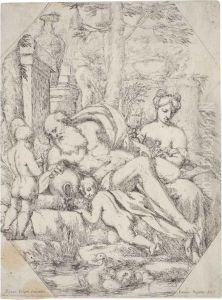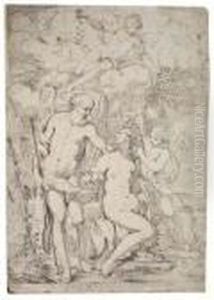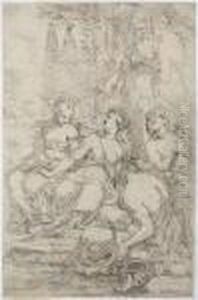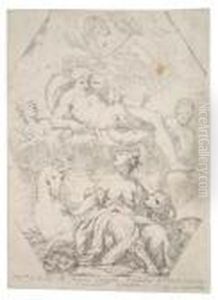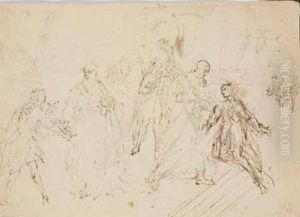Giuseppe Diamantini Paintings
Giuseppe Diamantini was an Italian painter and etcher, born in 1621 in Fossombrone, a town in the Marche region of Italy. His artistic journey commenced in his hometown but eventually led him to Bologna, where he became deeply influenced by the Bolognese school of painting, particularly by the works of Guido Reni, whose style significantly impacted Diamantini's approach to art. Diamantini's early works are characterized by their vivid depiction of religious subjects, a common theme for the era, showcasing his ability to blend spiritual themes with the burgeoning Baroque style.
Throughout his career, Diamantini proved to be a versatile artist, dabbling not only in painting but also in etching, a skill that garnered him considerable recognition. His etchings, often rich in detail and expression, contributed to his reputation as a master etcher of the 17th century. Despite being less well-known today, his prints and drawings continue to be studied for their contribution to the Baroque period's artistic expression.
Diamantini's work was marked by a dynamic use of light and shadow, a hallmark of Baroque art, which he employed to create depth and drama in his compositions. His figures are often depicted in mid-motion, with an emphasis on emotional intensity and human expression. This dramatic effect was not only limited to his religious paintings but also evident in his portraits and mythological scenes, genres in which he also excelled.
Later in his career, Diamantini returned to Fossombrone, where he continued to paint and etch, contributing significantly to the artistic heritage of his hometown. His works from this period reflect a matured artist who had fully assimilated the influences of his youth and developed a unique style that, while rooted in the traditions of the Bolognese school, displayed a distinct personal touch.
Giuseppe Diamantini passed away in 1705, leaving behind a legacy that, though somewhat overshadowed by his contemporaries, offers a fascinating glimpse into the transition from the Renaissance to the Baroque period in Italian art. His paintings and etchings remain valuable assets for art historians and collectors, illustrating the depth and diversity of 17th-century Italian art.
